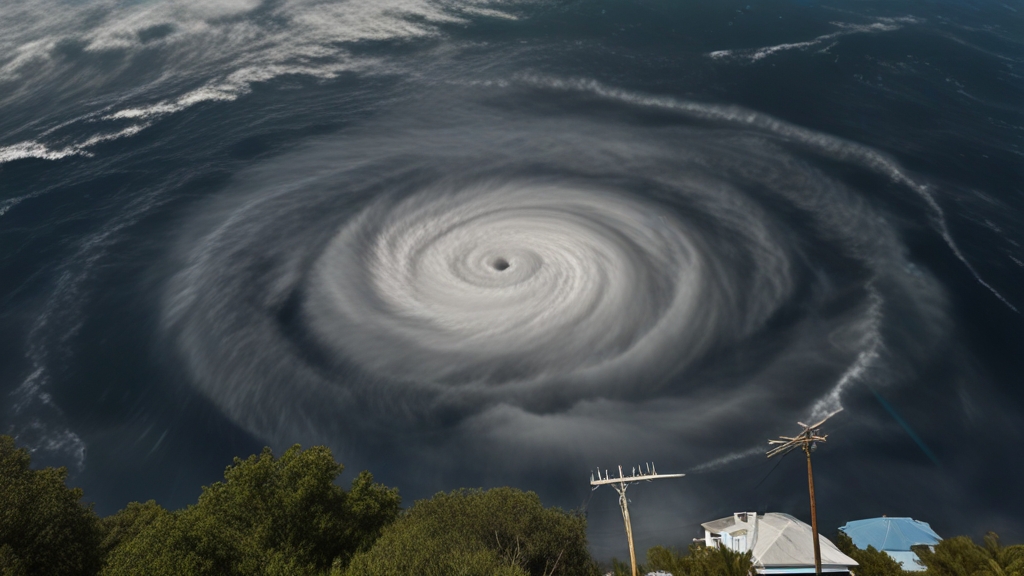
Hurricanes, one of nature's most formidable forces, regularly unleash their fury upon the United States, leaving a trail of destruction in their wake. These intense tropical cyclones, characterized by strong winds, heavy rainfall, and storm surges, pose significant threats to coastal regions, infrastructure, and human lives.
Formation and Anatomy:
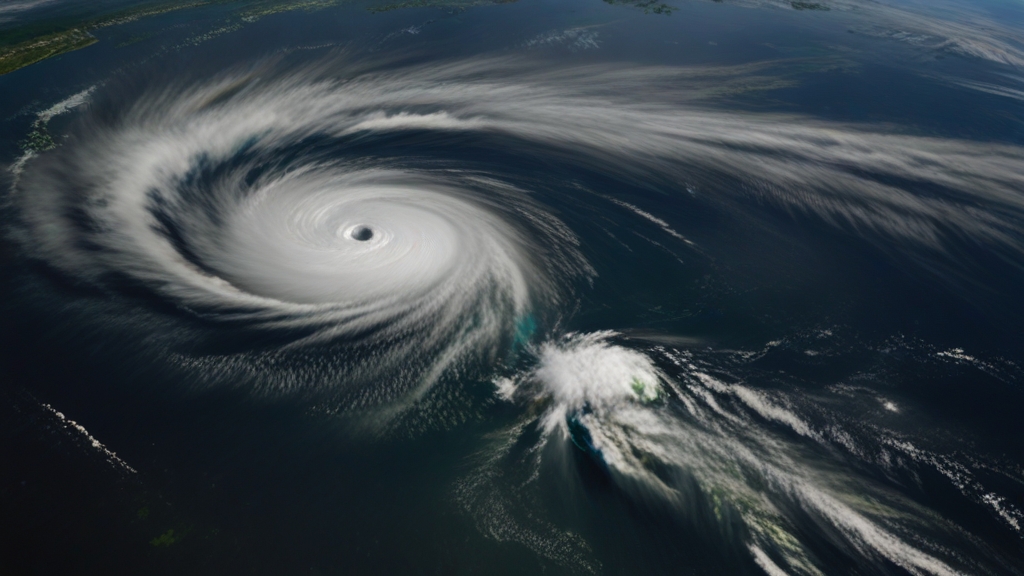
- Formation:
Hurricanes in the United States typically form through several steps:
1. Formation of a Low-Pressure System:
The formation of a hurricane usually begins when an area of warm, moist air develops over the warm waters of the Atlantic Ocean or the Gulf of Mexico. This air rises, creating a low-pressure system.
2.Development of a Tropical Disturbance:
As the warm, moist air continues to rise and condense, it forms clusters of thunderstorms known as tropical disturbances. These disturbances can evolve into more organized systems under the right atmospheric conditions.
3.Formation of a Tropical Depression:
If a tropical disturbance becomes more organized and maintains sustained winds of up to 38 miles per hour (61 kilometers per hour), it is classified as a tropical depression.
4.Strengthening into a Tropical Storm:
As the tropical depression continues to intensify and its winds reach speeds of 39 to 73 miles per hour (63 to 118 kilometers per hour), it is upgraded to a tropical storm and given a name.
5.Development into a Hurricane:
If the tropical storm further strengthens, with sustained winds exceeding 74 miles per hour (119 kilometers per hour), it is officially classified as a hurricane.
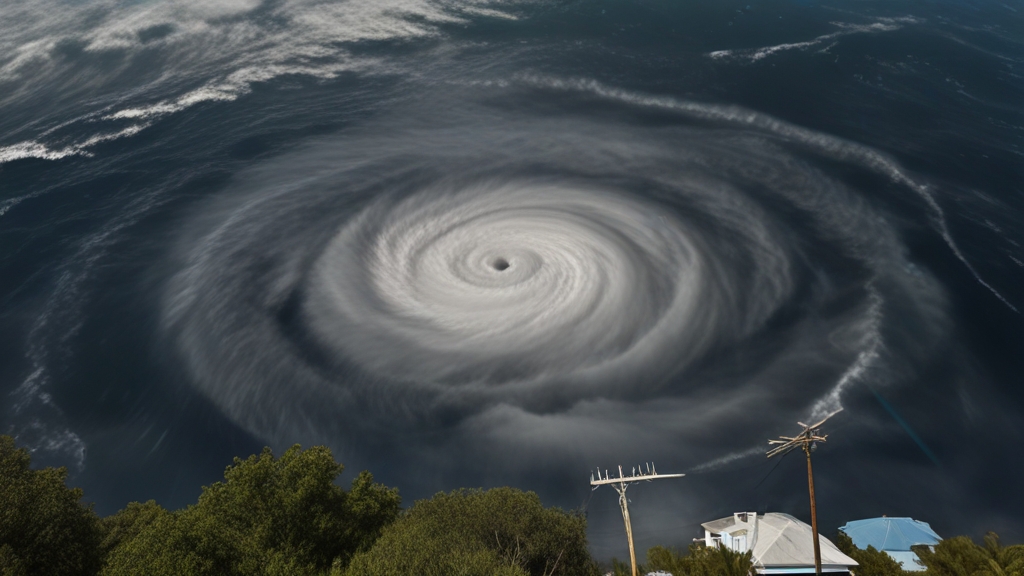
- Anatomy:
Once a hurricane forms, it typically consists of several key features:
1. Eye:
At the center of the hurricane is the eye, a relatively calm area characterized by clear skies and light winds. The eye is surrounded by the eyewall, where the most intense winds and rainfall occur.
2. Eyewall:
The eyewall is a ring of thunderstorms that surrounds the eye. It contains the strongest winds and heaviest rainfall of the hurricane.
3. Rainbands:
Spiral bands of clouds and thunderstorms, known as rainbands, extend outward from the center of the hurricane. These bands bring additional rainfall and can produce gusty winds and tornadoes.
Understanding the formation and anatomy of hurricanes is crucial for forecasting and preparing for these powerful storms, which can cause significant damage and disruption along the coastlines of the United States.
Impact on the United States:
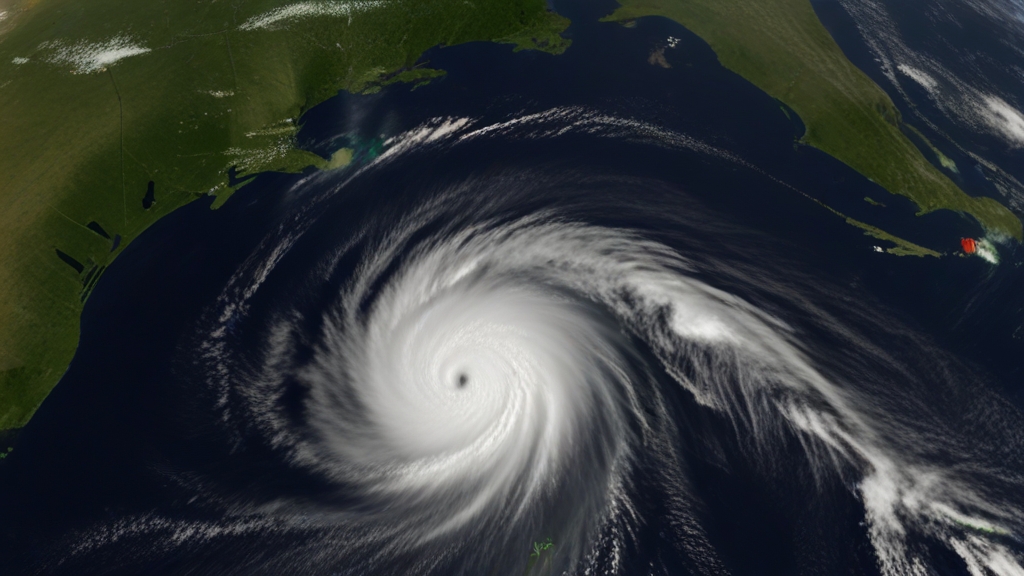
Hurricanes affect the country in several ways:
1. Strong Winds:
Hurricanes bring powerful winds that can cause extensive damage to buildings, infrastructure, and vegetation. Wind speeds in hurricanes can exceed 100 miles per hour (160 kilometers per hour) and are capable of uprooting trees, tearing off roofs, and toppling power lines.
2.Heavy Rainfall:
Hurricanes unleash torrential rainfall, leading to widespread flooding and water damage. The excessive rainfall can overwhelm drainage systems, rivers, and reservoirs, resulting in flash floods, landslides, and property destruction.
3.Storm Surges:
One of the most dangerous aspects of hurricanes is storm surges, which are massive walls of water pushed ashore by the hurricane's strong winds. These surges can inundate coastal areas, flooding homes, roads, and businesses, and posing a grave threat to life and property.
4.Tornadoes:
Hurricanes often spawn tornadoes, particularly in the outer rainbands and near the eyewall. These tornadoes can cause additional devastation, with strong winds capable of destroying homes and causing injuries or fatalities.
5.Economic Impact:
The cumulative effects of wind damage, flooding, storm surges, and other factors result in significant economic losses for the affected regions. Recovery and rebuilding efforts following a hurricane can cost billions of dollars and take years to complete.
6. Displacement and Humanitarian Crisis:
Hurricanes can displace thousands of people from their homes, leading to temporary or long-term displacement. In addition to the physical destruction, hurricanes can also cause a humanitarian crisis, with communities facing shortages of food, water, shelter, and medical supplies in the aftermath of the storm.
Overall, hurricanes pose a serious threat to the safety, well-being, and economic stability of the United States, necessitating preparedness, response, and recovery efforts at the federal, state, and local levels.
Mitigation and Preparedness:
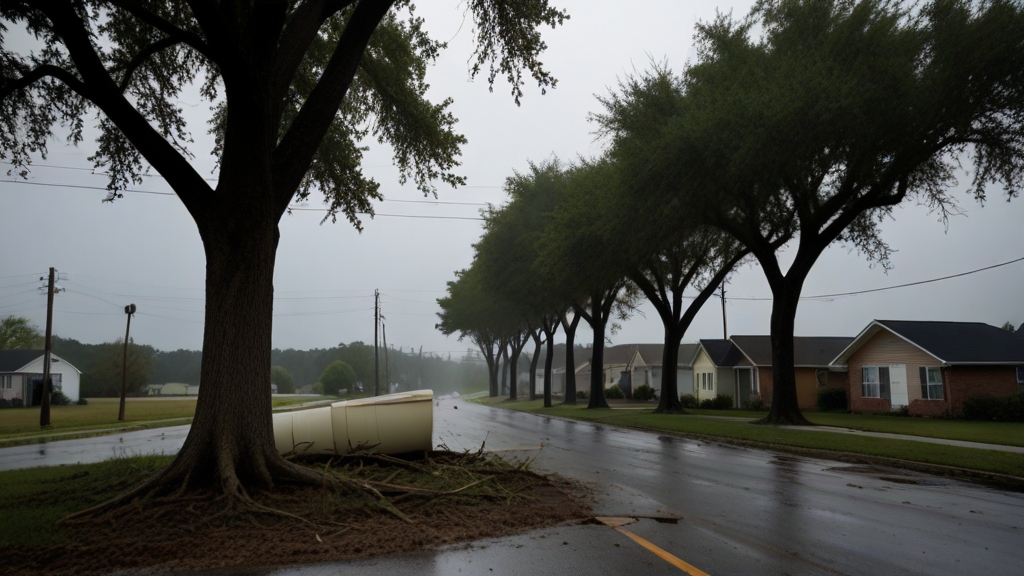
Mitigating the impact of hurricanes and preparing for them in the United States involves several key strategies:
1. Early Warning Systems:
The United States utilizes sophisticated meteorological technologies and forecasting systems to track hurricanes and provide early warnings to potentially affected areas. The National Hurricane Center (NHC) plays a central role in monitoring tropical cyclones and issuing advisories, watches, and warnings to the public.
2. Evacuation Plans:
Coastal communities at risk of hurricane impacts develop evacuation plans to ensure the safe and orderly evacuation of residents to designated shelters or inland areas. These plans are based on storm surge projections, flood risk assessments, and evacuation zone maps.
3. Infrastructure Improvements:
Infrastructure improvements, such as building codes, seawalls, levees, and flood barriers, are implemented to enhance resilience against hurricane-related hazards. These measures help protect critical infrastructure, residential areas, and commercial districts from wind damage, flooding, and storm surges.
4. Community Preparedness:
Community preparedness initiatives raise awareness about hurricane risks and encourage residents to take proactive measures to safeguard their homes, businesses, and families. These initiatives may include creating emergency supply kits, developing family communication plans, and participating in hurricane preparedness drills.
5. Emergency Response Coordination:
Federal, state, and local agencies coordinate emergency response efforts before, during, and after hurricanes to ensure an effective and coordinated response. This includes pre-positioning emergency personnel, equipment, and supplies, establishing emergency shelters, and mobilizing search and rescue teams.
6. Public Education and Outreach:
Public education campaigns inform residents about hurricane preparedness, evacuation procedures, and safety precautions. These campaigns emphasize the importance of heeding evacuation orders, staying informed through official channels, and taking proactive measures to protect life and property.
7. Post-Disaster Recovery and Reconstruction:
Following a hurricane, efforts focus on post-disaster recovery and reconstruction, including debris removal, infrastructure repairs, and assistance programs for affected individuals and communities. Federal disaster relief funds and resources are allocated to support recovery efforts and rebuild resilient communities.
By implementing these strategies and fostering a culture of preparedness and resilience, the United States can better mitigate the impact of hurricanes and protect the safety and well-being of its residents.
The impact of climate change on hurricanes:
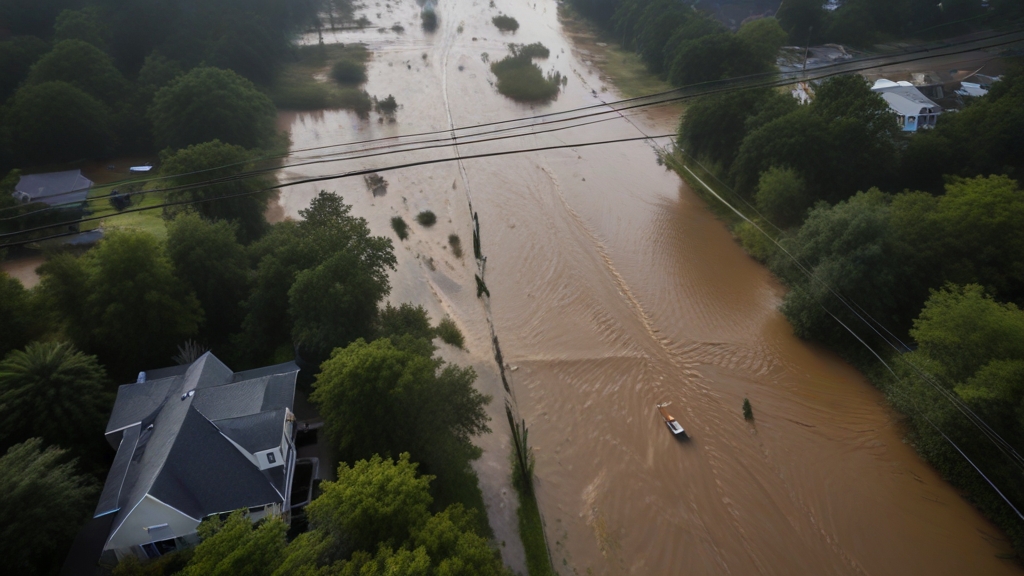
Climate change affects hurricanes in the United States in several ways:
1. Warmer Sea Surface Temperatures:
As global temperatures rise due to climate change, sea surface temperatures also increase. Warmer ocean waters provide more energy and moisture to fuel hurricanes, potentially leading to stronger and more intense storms.
2. Increased Intensity:
The warming of the atmosphere and oceans can lead to the intensification of hurricanes. Higher sea surface temperatures contribute to rapid intensification, where hurricanes strengthen quickly over a short period, posing greater risks to coastal areas.
3. Higher Storm Surge:
Rising sea levels, driven by climate change, exacerbate the impact of storm surges associated with hurricanes. Higher sea levels mean that storm surges can reach further inland, flooding more extensive areas and causing greater damage to coastal communities.
4. Increased Rainfall:
Warmer air holds more moisture, leading to heavier rainfall during hurricanes. Climate change can result in increased precipitation rates, exacerbating the risk of flooding and freshwater inundation in affected regions.
5. Shifts in Storm Tracks:
Climate change may alter the typical tracks and patterns of hurricanes in the Atlantic Ocean. While the overall number of hurricanes may not necessarily increase, changes in atmospheric circulation patterns could result in hurricanes tracking further northward or impacting regions that were previously less vulnerable.
Understanding the impacts of climate change on hurricanes is crucial for policymakers, emergency managers, and communities to effectively prepare for and mitigate the risks associated with these extreme weather events.
Future challenges:
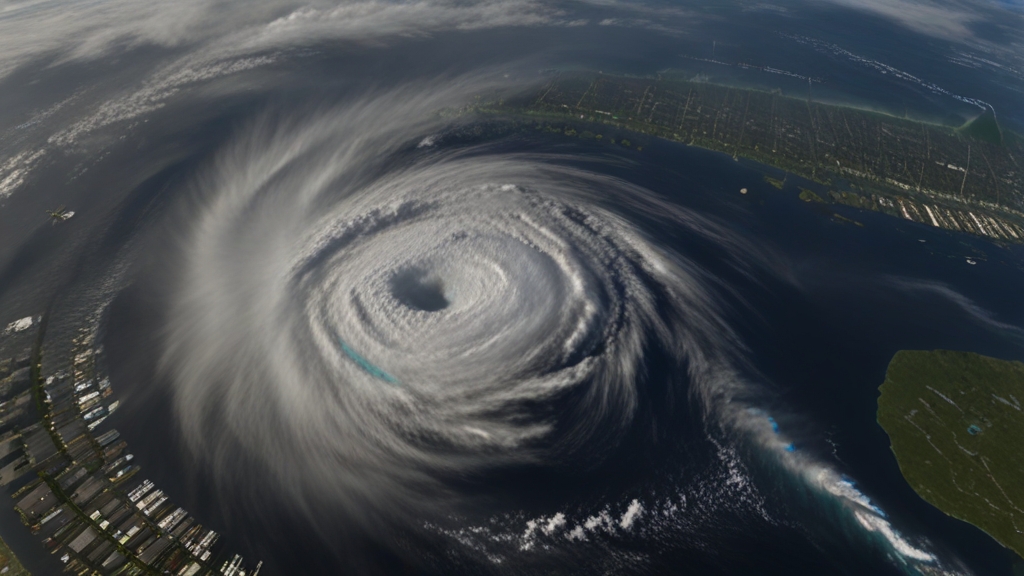
Some of the future challenges that the United States must address to confront hurricanes include:
1. Climate Change Adaptation:
The increasing frequency and intensity of hurricanes due to climate change necessitate enhanced adaptation measures. This includes investing in resilient infrastructure, updating building codes, and implementing coastal management strategies to mitigate the impacts of rising sea levels and stronger storms.
2. Community Resilience:
Building community resilience is essential for effectively responding to hurricanes. This involves educating residents about evacuation procedures, establishing robust emergency communication systems, and fostering local partnerships to enhance disaster preparedness and response capabilities.
3. Equitable Preparedness:
Ensuring that vulnerable and marginalized communities have equitable access to resources and support during hurricane events is critical. Addressing socio-economic disparities, providing adequate shelter options, and facilitating inclusive evacuation plans are essential components of equitable preparedness efforts.
4. Natural Ecosystem Conservation:
Protecting and restoring natural ecosystems such as wetlands, mangroves, and barrier islands can help buffer coastal communities from the impacts of hurricanes. These ecosystems provide valuable natural defenses against storm surges, erosion, and flooding, while also supporting biodiversity and ecosystem services.
5. Investment in Research and Innovation:
Continued investment in hurricane research, forecasting technology, and resilience initiatives is necessary to improve our understanding of these complex weather phenomena and enhance our ability to predict and mitigate their impacts. This includes supporting interdisciplinary research efforts, advancing storm modeling capabilities, and fostering collaboration between scientists, policymakers, and stakeholders.
By addressing these challenges and implementing comprehensive strategies, the United States can better prepare for and mitigate the impacts of hurricanes, safeguarding the safety, well-being, and resilience of its communities in the face of future storms.
Hurricanes represent a formidable natural hazard, with profound impacts on the United States and other coastal regions around the world. Through scientific research, technological innovation, and community resilience, societies can better prepare for and mitigate the destructive effects of these powerful storms. By fostering greater awareness and collaboration, we can work towards a safer and more resilient future in the face of nature's relentless fury.

You must be logged in to post a comment.